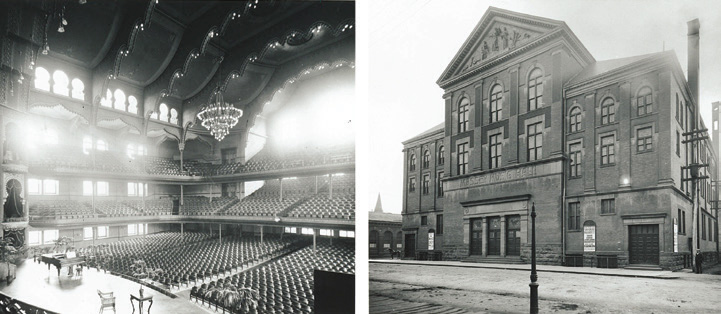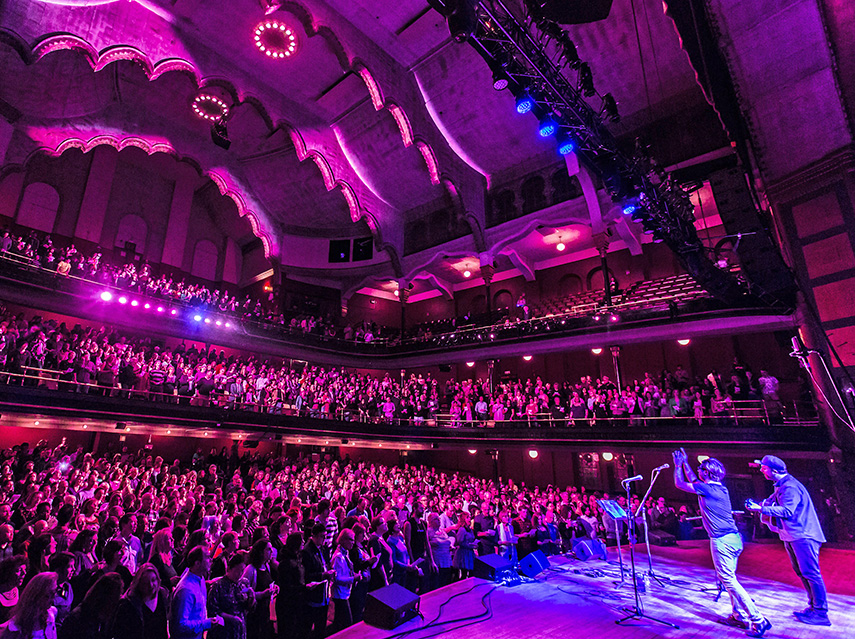Any upgrade to a heritage venue requires balancing modernization and restoration. When that venue is a national treasure, as Toronto’s Massey Hall is – with a history of hosting some the world’s most iconic artists – getting that balance just right is mission critical.
When Massey reopens in 2020, those judging the end result will include audience members and performers who hold the venue in high regard. Among them, Steve Earle, who said in an April 2019 interview with Canada’s FYI Music News: “Massey Hall is my favorite place to play in the world… I hope they don’t f— it up with their renovation. It’s not just a national treasure – it’s like an international treasure.”
Designed by architect Sydney R. Badgley in 1892, Massey Hall was built in downtown Toronto on land purchased by Hart Massey – a successful industrialist who presented the venue as a gift to the citizens of Toronto in memory of his son, Charles, with a mission to develop the arts and provide entertainment to the community.
In the 125 years since it opened (with a performance of Handel’s “Messiah” in June, 1894) Massey Hall has done that and more. Although everything from boxing matches to beauty contests have been held there, the hall’s primary function is a concert hall. Over time it’s hosted a diverse collection of artists that includes Enrico Caruso, Igor Stravinsky, Oscar Peterson and Glenn Gould, Pavarotti, Neil Young, Rush, and Gordon Lightfoot (who’s played Massey 150 times since 1967).

“Badgley designed churches, which is why we have the center aisle and stained-glass windows,” says the late Deane Cameron, president and CEO of Roy Thomson Hall and Massey Hall Corporation who passed away shortly after I spoke with him about the project (see sidebar). “There’s an almost religious level of respect for Massey. One day a gentleman from Germany was out front taking pictures. His whole life, he wanted to visit, since the 1971 Neil Young album, and he was literally in tears.”
Jazz greats Charlie Parker, Dizzy Gillespie, Bud Powell, Charles Mingus and Max Roach also performed together at Massey as The Quintet in 1965, Cameron adds. “Looking at year-end statements from 1896 to 1919, you can see so many choirs. Hart Massey was a very religious man and loved choirs, and that’s one of the reasons why it was important to him to have incredible acoustics.”
New Life
The renovation of Massey began in July 2018 following a decade of planning and encompasses the interior and exterior as well as the construction of a 7-story addition. One of the central challenges, however, is upgrading the main hall for modern concerts while preserving its acoustics and character.
In some cases, signature character elements long hidden from view owing to the fact the city is a far noisier environment than it was during Massey’s lifetime – will be revealed for the first time in decades; notably 100 art nouveau, stained-glass windows, some featuring life-sized portraits of composers including Bach, Beethoven, Mozart, Handel, and Haydn.
Blocked from view in the 1950s to reduce unwanted daylight and exterior noise, the windows have been completely restored, soundproofed and upgraded to ensure the venue’s interior temperature remains constant. “They’ll be visible from inside and outside the building, but covered by acoustic blackout blinds during shows that will raise and lower at the push of a button,” Cameron explains.
“There are things that need to be done to make Massey Hall more suitable for modern concerts, but many things that make it special that we don’t want to touch,” notes Doug McKendrick, director of production, “including acoustic and psychoacoustic elements that impact the perception of how it sounds and its warm look and feel.”















